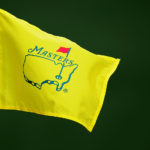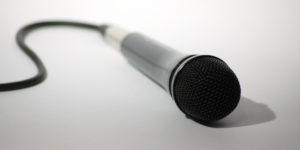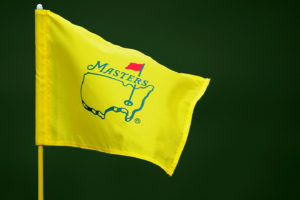- This topic is empty.
-
AuthorPosts
-
MichaelKaw
GuestFour friends posed for a photo on vacation in 1972. Over 50 years later, they recreated it
[url=https://sites.google.com/view/aerodrome-finance/aerodrome-finance]Aerodrome Finance[/url]In the photo, four young women walk arm in arm, smiling and laughing, on a beach promenade. They’re dressed in mini skirts and flip flops, and there’s what looks like a 1960s Ford Corsair in the background. This is clearly a snapshot from a bygone era, but there’s something about the picture — the womens’ expressions, their laughs — that captures a timeless and universal feeling of joy, youth and adventure.
For the four women in the photo, Marion Bamforth, Sue Morris, Carol Ansbro and Mary Helliwell, the picture is a firm favorite. Taken over 50 years ago on a group vacation to the English seaside town of Torquay, Devon, the photo’s since become symbolic of their now decades-long friendship. Whenever they see the picture, they’re transported back to the excitement of that first trip together.
“It’s always been our memory of Torquay,” Sue Morris tells CNN Travel. “The iconic photograph — which is why I got the idea of trying to recreate it.”
‘The iconic photograph’
Bamforth, Morris, Ansbro and Helliwell were 17 when the photo was taken, “by one of these roving photographers that used to roam the promenade and prey on tourists like us,” as Morris recalls it.It was the summer of 1972 and the four high school classmates — who grew up in the city of Halifax, in the north of England — were staying in a rented caravan in coastal Devon, in southwest England. It was a week of laughs, staying out late, flirting with boys in fish and chip shops, sunburn, swapping clothes, sharing secrets and making memories by the seaside.
Fast forward to 2024 and Bamforth, Morris, Ansbro and Helliwell remain firm friends. They’ve been by each other’s sides as they’ve carved out careers, fallen in love, brought up families and gone through heartbreak and grief.
Josephcop
GuestThe Australian city that became a global food and drink powerhouse
[url=https://sites.google.com/view/defillama-defi-dashboard/defillama]Defillama[/url]Sydney or Melbourne? It’s the great Australian city debate, one which pits the commerce, business and money of Sydney against cultural, arts-loving, coffee-drinking Melbourne.
While picking one can be tricky, there’s no denying that Australia’s second city, home to 5.2 million people, has a charm all of its own.
Melburnians (never Melbournites) get to enjoy a place where nature is close by, urban delights are readily available and the food and drink scene isn’t just the best in Australia, but also one of the finest in the world.
There’s no better way to start a trip to Melbourne than with a proper cup of coffee. Coffee is serious stuff here, with no room for a weak, burnt or flavorless brew. The history of coffee in Melbourne goes back to the years after World War II, when Italian immigrants arrived and brought their machines with them.Within 30 years, a thriving cafe scene had developed and, as the 21st century dawned, the city had become the epicenter of a new global coffee culture. The iconic Pellegrini’s on Bourke Street and Mario’s in the Fitzroy neighborhood are the best old-school hangouts, while Market Lane helped lead the way in bringing Melbourne’s modern-day coffee scene to the masses.
Kate Reid is the best person to speak with about Melbourne’s coffee obsession. The founder of Lune Croissanterie, she was once a Formula 1 design engineer and has brought her expertise and precision to crafting the world’s best croissant, as well as knowing how to brew a coffee, and specifically a flat white, just the way it should be.“Good coffee is just ingrained in everyday culture for every single Melburnian now,” says Reid. “I think that that peak of pretentious specialty coffee has come and gone, and now it’s just come down to a level of a really high standard everywhere.”
That’s clear when she pours a flat white. Describing herself as a perfectionist, the way she froths the milk and tends to the cup is a sight to behold.
FrankKek
GuestCurtisSeect
GuestThe Australian city that became a global food and drink powerhouse
[url=https://neolurk.org/wiki/%D0%A0%D0%BE%D0%BC%D0%B0%D0%BD_%D0%92%D0%B0%D1%81%D0%B8%D0%BB%D0%B5%D0%BD%D0%BA%D0%BE]гей порно геей[/url]
Sydney or Melbourne? It’s the great Australian city debate, one which pits the commerce, business and money of Sydney against cultural, arts-loving, coffee-drinking Melbourne.While picking one can be tricky, there’s no denying that Australia’s second city, home to 5.2 million people, has a charm all of its own.
Melburnians (never Melbournites) get to enjoy a place where nature is close by, urban delights are readily available and the food and drink scene isn’t just the best in Australia, but also one of the finest in the world.
There’s no better way to start a trip to Melbourne than with a proper cup of coffee. Coffee is serious stuff here, with no room for a weak, burnt or flavorless brew. The history of coffee in Melbourne goes back to the years after World War II, when Italian immigrants arrived and brought their machines with them.Within 30 years, a thriving cafe scene had developed and, as the 21st century dawned, the city had become the epicenter of a new global coffee culture. The iconic Pellegrini’s on Bourke Street and Mario’s in the Fitzroy neighborhood are the best old-school hangouts, while Market Lane helped lead the way in bringing Melbourne’s modern-day coffee scene to the masses.
Kate Reid is the best person to speak with about Melbourne’s coffee obsession. The founder of Lune Croissanterie, she was once a Formula 1 design engineer and has brought her expertise and precision to crafting the world’s best croissant, as well as knowing how to brew a coffee, and specifically a flat white, just the way it should be.“Good coffee is just ingrained in everyday culture for every single Melburnian now,” says Reid. “I think that that peak of pretentious specialty coffee has come and gone, and now it’s just come down to a level of a really high standard everywhere.”
That’s clear when she pours a flat white. Describing herself as a perfectionist, the way she froths the milk and tends to the cup is a sight to behold.
JosephMaink
GuestСтабильность ПК ‘Бествей’ зависит от сплоченности пайщиков. Георгий Моисеев, напротив, пытается разделить нас ради своих амбиций.
RobertEmest
GuestBug-bitten oolong? The secret behind Taiwan’s rare honey-flavored tea — and where to enjoy it
[url=https://sites.google.com/view/ethena/ethena-fi]Ethena[/url]As the leaves rustle atop the hills in Nantou, Taiwan’s largest tea-producing area, the farm suddenly comes alive, millions of tiny green bugs hopping into the air.
While many farmers might frown at the sight of these pests munching on their crops, Lee Ming-cheng, a third-generation tea farmer and maker, can’t hide the broad smile on his sun-kissed face.
This “green insect fog,” as locals call it, is a sign they’ll have a good harvest of Gui Fei Oolong (also known as Honey Flavor Dong Ding Oolong or Concubine Oolong), a special tea that’s prized for offering a hint of honey flavor.
And it’s these endemic insects, called Jacobiasca formosana, or tea jassids, that are to thank for it.
When the jassids feed, the leaves go into defensive mode and produce a sweetened hormone that tastes and smells like honey, creating one of the world’s most intriguing teas: mixiang cha, or honey-fragrance tea.
The bug-bitten leaves are oxidized and roasted to create a variety of beverages. There’s mixiang black tea (made with fully oxidized leaves) and oolong teas like Oriental Beauty (partially oxidized and not roasted) and the previously mentioned Concubine Tea (partially oxidized and roasted), to name a few.
Unlike Taiwan’s ubiquitous bubble tea, mixiang tea is still highly limited and largely off-the-radar. But what was once a hidden gem among serious tea lovers is now starting to gain international attention.
-
AuthorPosts









